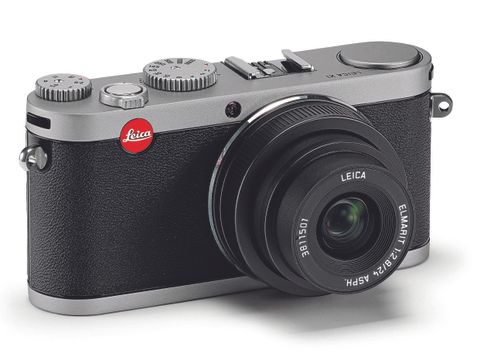TechRadar Verdict
Crucially, what the X1 sets out to do it does well: that is, to provide high-quality images in a small and compact body
Pros
- +
Excellent image quality with raw files
- +
Sharp lens right up to edges of the frame
- +
Beautiful, lightweight and pocket-friendly body
- +
Analogue dials provide immediate and easy control over exposure
- +
Reliable metering system
Cons
- -
Slow and hesitant AF system
- -
Below-par LCD quality
- -
JPEG quality could be better
- -
Priced far higher than competing models
- -
Minimum focusing distance of 30cm can be limiting
Why you can trust TechRadar
Leica X1 review: overview
The X1 used for this review has the recently updated firmware, V.2.0
Leica's foray into the digital world may have been at a slower and more considered pace than what we're used to seeing, but working in partnership with Panasonic has nevertheless meant that it's managed to saturate a healthy range of the camera market.
For more everyday use the company's point-and-shoot C-LUX and enthusiast D-LUX ranges sit at the base of its stable, while the M9 rangefinder and S2 medium format model lie at the other end to cater for professionals.
In between the two, and among a handful of intermediate models, sits the X1, which can safely be considered as the company's answer to the growing popularity of compact system cameras.
In many ways the model is unique, or at least it was upon its launch in September 2009 and its recent firmware upgrade improves upon the original performance. It begins a new series for the company, pairing a 12.2MP APS-C format CMOS sensor with a 24mm f/2.8 fixed lens, the combination of which produces a camera with an effective focal length of 36mm in 35mm terms. It's targeted at the enthusiast who requires a solid, high-quality model with dependable image quality in a pocketable form, albeit it one who will be willing to part with around £1400 for the privilege.
The camera offers a capable feature set, but rarely does it go out of its way to offer any additional niceties. The sensitivity range, for example, is restricted to a reasonable span of ISO 100-3200, with no extension settings are either end, while metering patterns comprise the standard multi, centre-weighted and spot options.
Five colour settings are on hand, including two black and white flavours, while the camera records all raw images in the Adobe DNG standard, which makes them immediately compatible with Adobe's editing programs. Image stabilization is also included, although it's neither lens nor sensor based; instead, the camera uses processing to blend two images into one to achieve a sharper result.
There's a little flexibility in the camera's 11-point focusing system, with high-speed focusing options in 1-point and 11-point modes, as well as a more precise spot focus option and face detection setting, although sadly video recording - HD or otherwise - is nowhere to be found. Also a shame is the 230,000dot resolution of the camera's LCD screen, which today is bettered on models a fraction of the X1's price. At 2.7in it's hardly the largest display either, although, of course, a larger screen would necessitate a slightly bigger body.
Current page: Leica X1 review: Overview
Next Page Leica X1 review: Build quality & handling
